Abstract
A permanent state of specific immunological unresponsiveness can be produced in guinea-pigs already sensitive to K2Cr2O7 by a combination of the intravenous injection of 20 mg/kg K2Cr2O7 and an epicutaneous test with this compound given 24 hr after the intravenous injection. The later the first epicutaneous skin test after the intravenous injection is delayed, the shorter the period of unresponsiveness. An intravenous injection of less than 20 mg/kg also produces only a temporary state of desensitization. The time that animals became resensitized was proportional to the dose of K2Cr2O7 given intravenously.
Intravenous injection of Be lactate into guinea-pigs sensitive to BeF2 produces only a temporary desensitization lasting no longer than 48 hr.
It is suggested that the state of permanent unresponsiveness induced to K2Cr2O7 after the animals have already been made sensitive is an example of `high zone' immunological tolerance.
Full text
PDF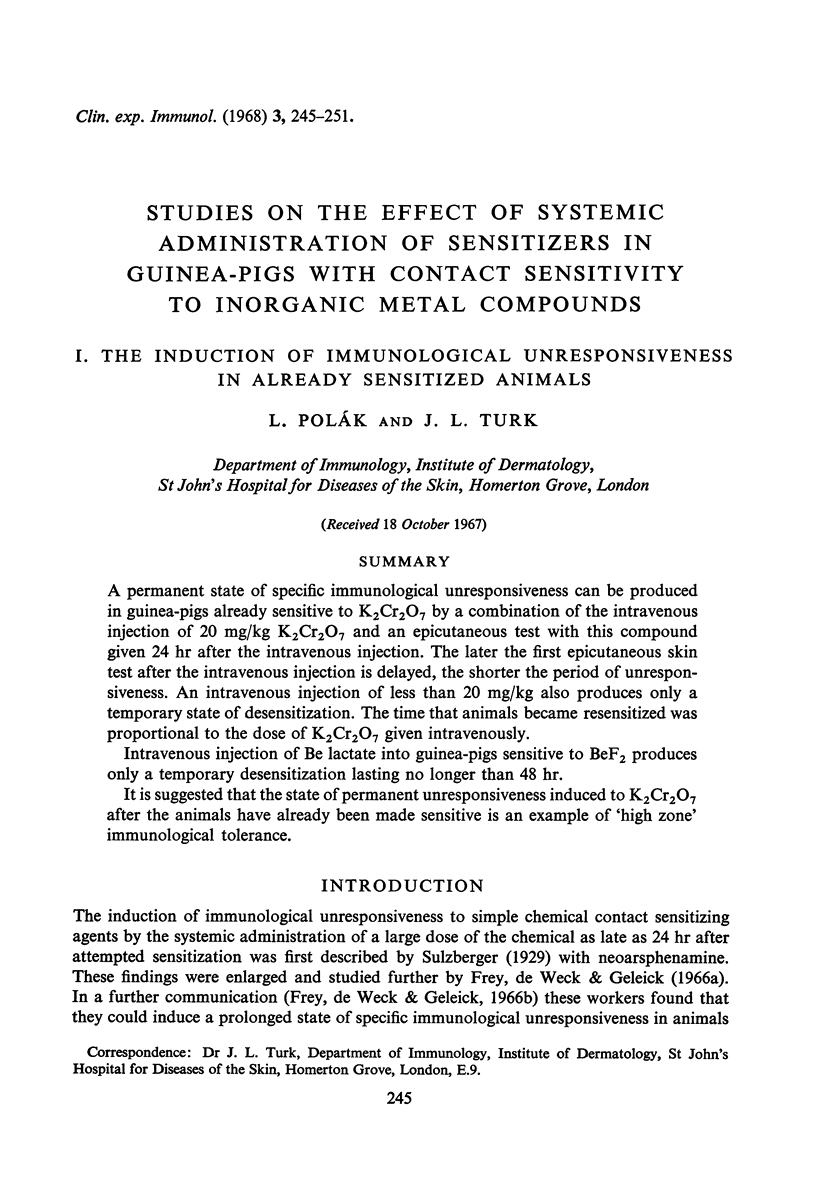
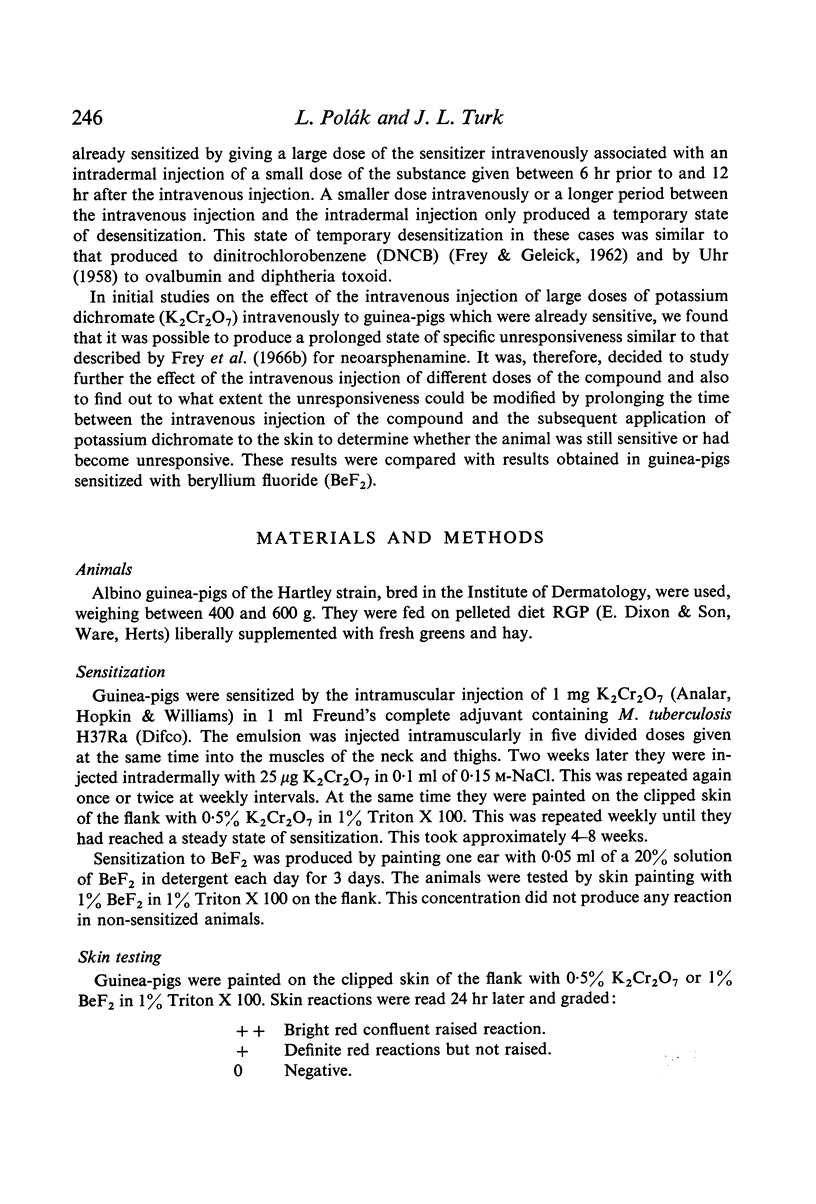
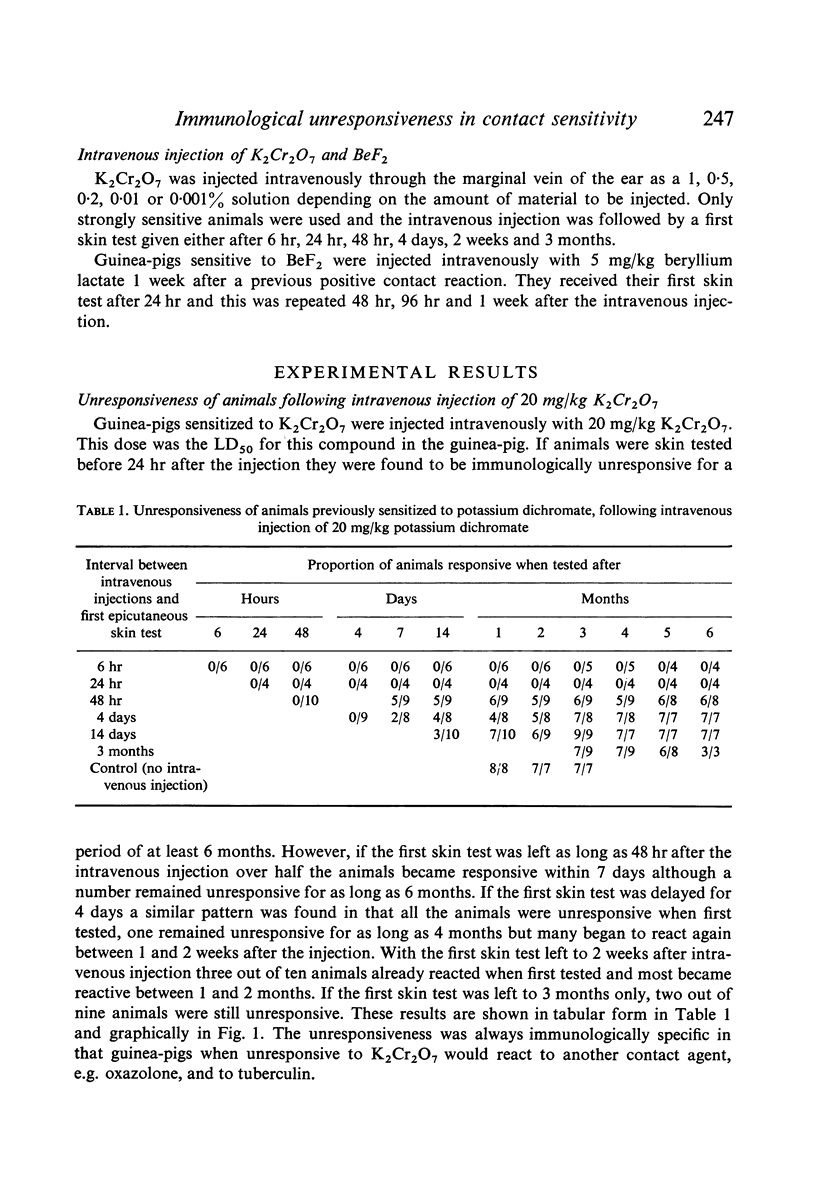
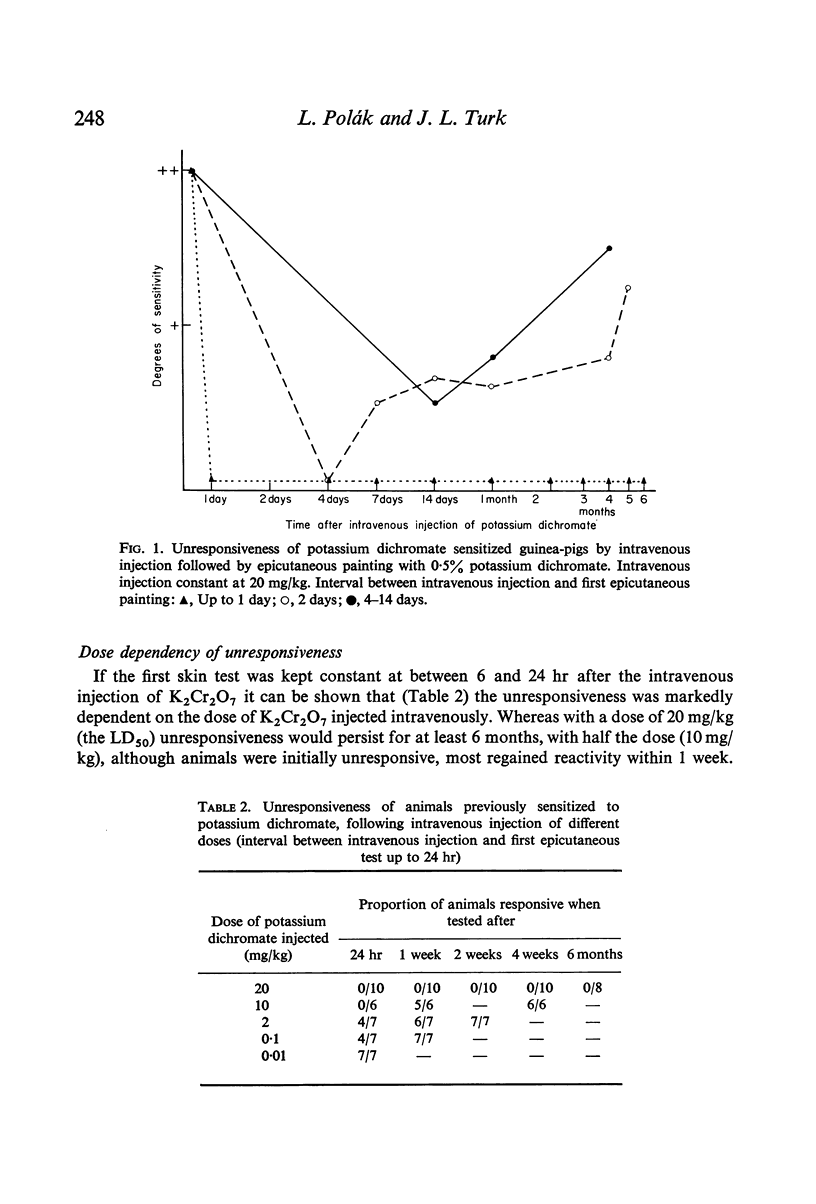
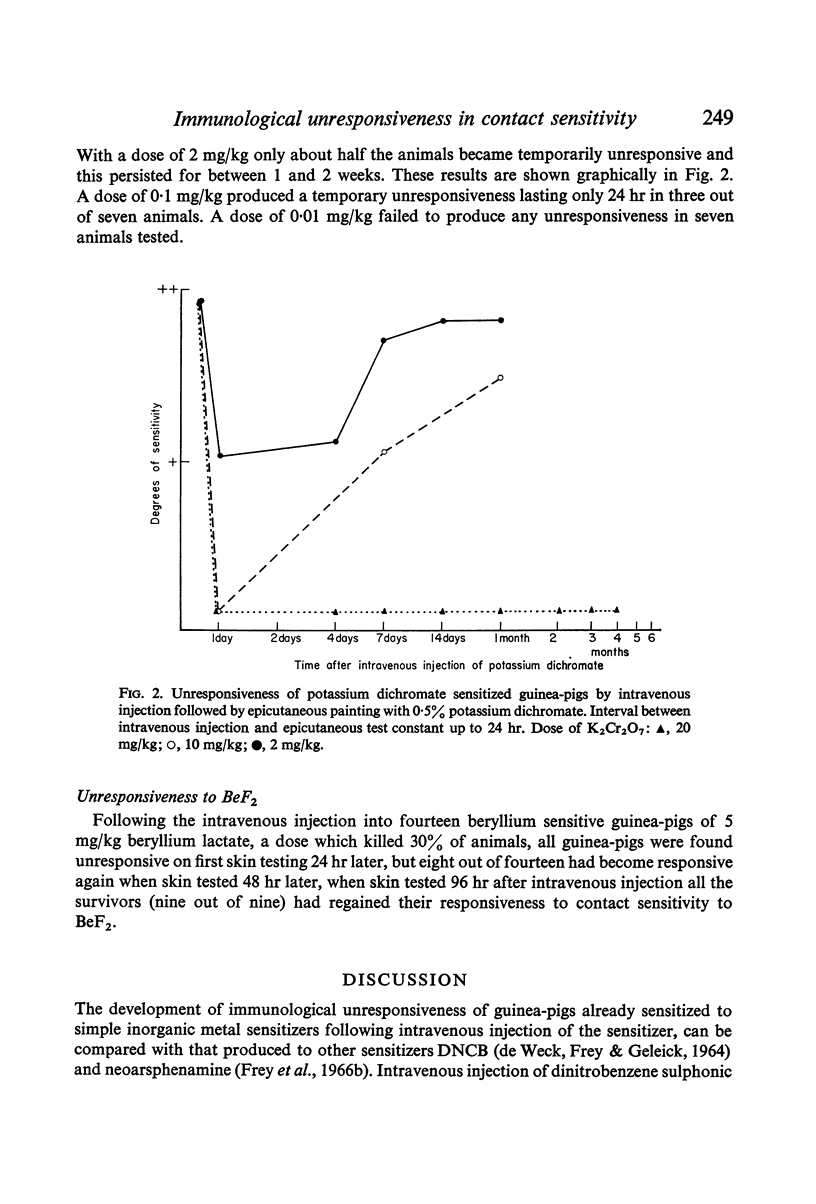
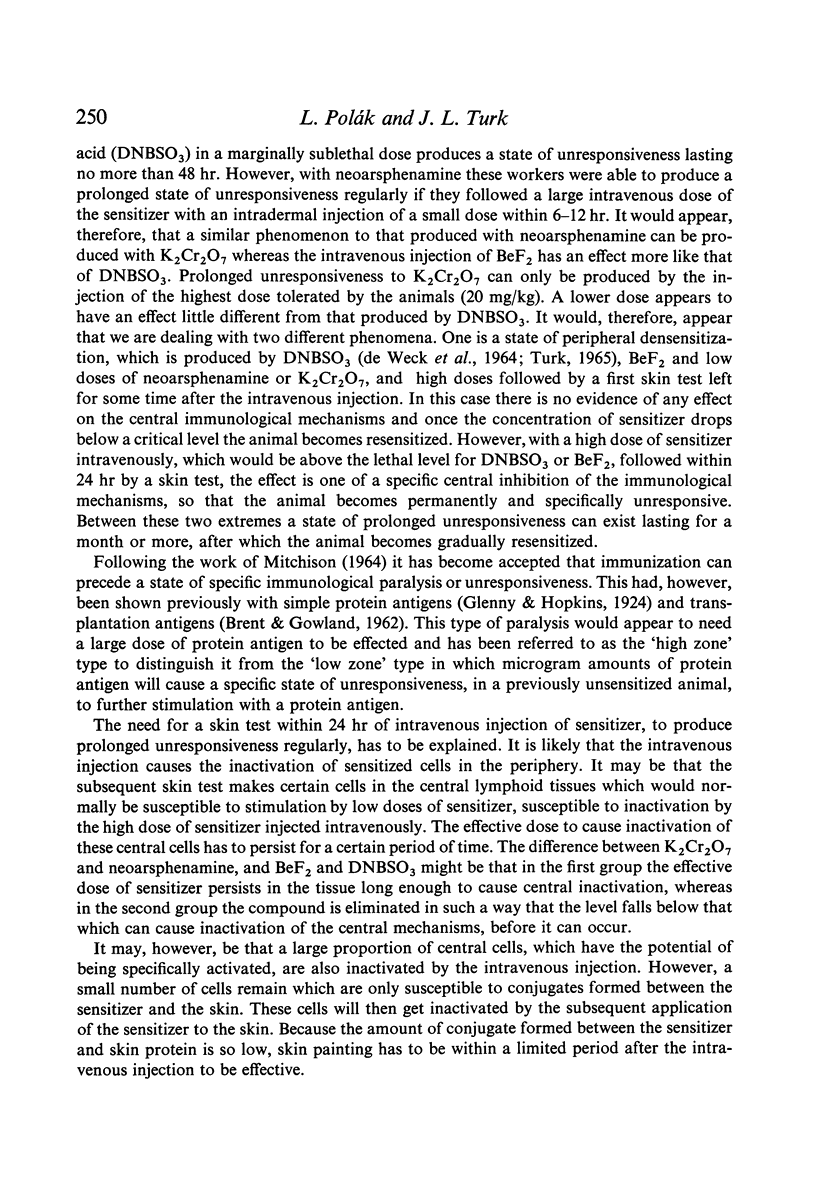
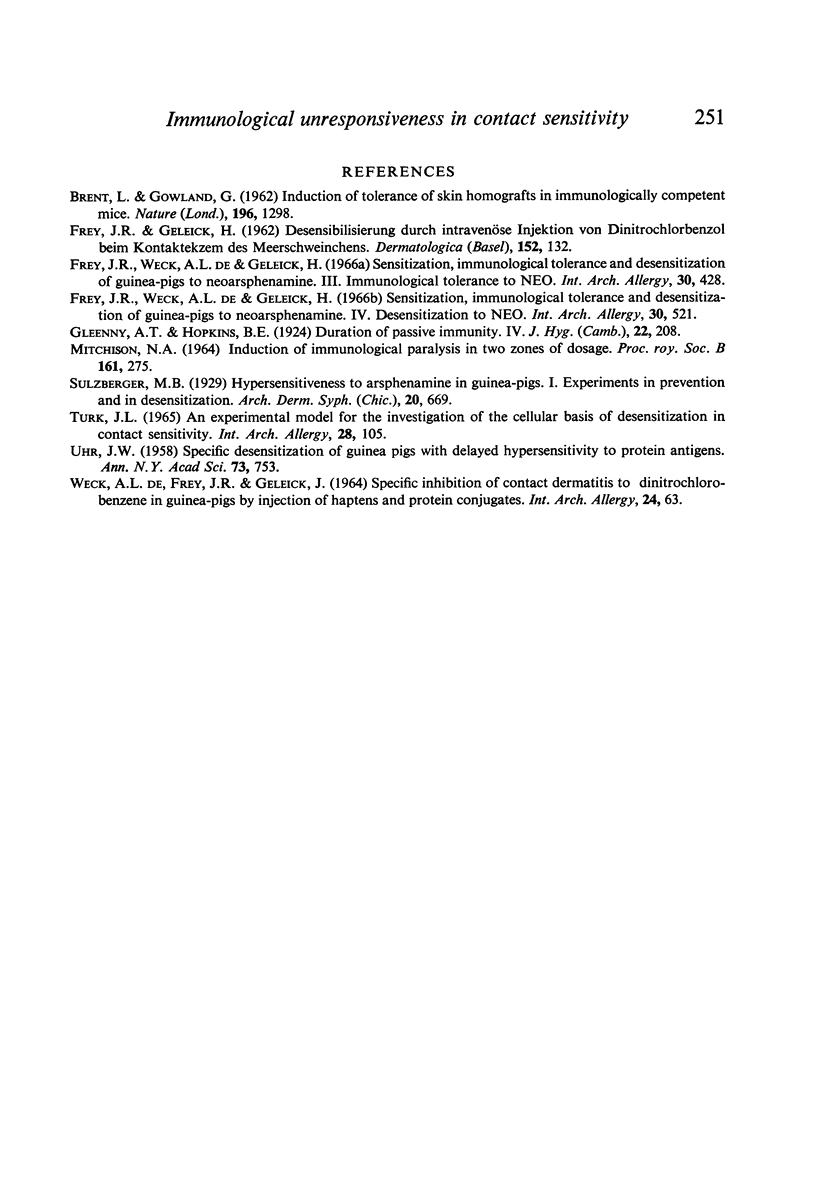
Selected References
These references are in PubMed. This may not be the complete list of references from this article.
- BRENT L., GOWLAND G. Induction of tolerance of skin homografts in immunologically competent mice. Nature. 1962 Dec 29;196:1298–1301. doi: 10.1038/1961298a0. [DOI] [PubMed] [Google Scholar]
- DEWECK A. L., FREY J. R., GELEICK H. SPECIFIC INHIBITION OF CONTACT DERMATITIS TO DINITROCHLOROBENZENE IN GUINEA PIGS BY INJECTION OF HAPTENS AND PROTEIN CONJUGATES. Int Arch Allergy Appl Immunol. 1964;24:63–85. doi: 10.1159/000229446. [DOI] [PubMed] [Google Scholar]
- FREY J. R., GELEICK H. [Desensitization by intravenous injection of dinitrochlorbenzene in contact eczema in guinea pigs]. Dermatologica. 1962;125:132–139. [PubMed] [Google Scholar]
- Frey J. R., de Weck A. L., Geleick H. Sensitization, immunological tolerance and desensitization of guinea pigs to neoarsphenamine. 3. Immunological tolerance to NEO. Int Arch Allergy Appl Immunol. 1966;30(5):428–445. doi: 10.1159/000229828. [DOI] [PubMed] [Google Scholar]
- Frey J. R., de Weck A. L., Geleick H. Sensitization, immunological tolerance and desensitization of guinea pigs to neoarsphenamine. IV. Desensitization to NEO. Int Arch Allergy Appl Immunol. 1966;30(6):521–537. doi: 10.1159/000229839. [DOI] [PubMed] [Google Scholar]
- MITCHISON N. A. INDUCTION OF IMMUNOLOGICAL PARALYSIS IN TWO ZONES OF DOSAGE. Proc R Soc Lond B Biol Sci. 1964 Dec 15;161:275–292. doi: 10.1098/rspb.1964.0093. [DOI] [PubMed] [Google Scholar]
- Turk J. L. An experimental model for the investigation of the cellular basis of desensitization in contact sensitivity. Int Arch Allergy Appl Immunol. 1965;28(1):105–112. doi: 10.1159/000229650. [DOI] [PubMed] [Google Scholar]
- UHR J. W. Specific desensitization of guinea pigs with delayed hypersensitivity to protein antigens. Ann N Y Acad Sci. 1958 Oct 7;73(3):753–756. doi: 10.1111/j.1749-6632.1959.tb40852.x. [DOI] [PubMed] [Google Scholar]


